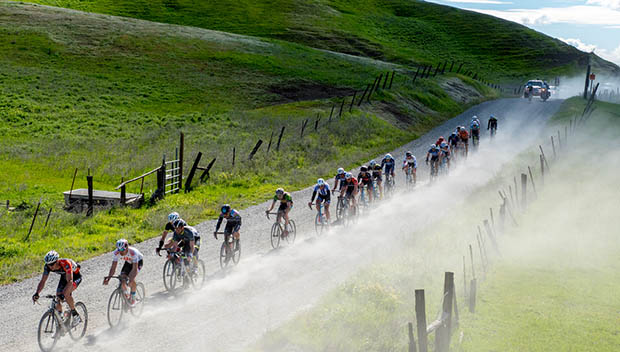
In the last five years or so, a style of cycling has exploded onto the scene and become more popular than ever expected: gravel.
It's easy to see why—it's out in nature, has a more laid-back atmosphere, and is, for the most part, protected from traffic. It's not as demanding skills-wise as downhill mountain biking, but it's still an outdoor adventure where riders can explore with like-minded athletes and get a little dirty.
Gravel racing has become popular to the point where even the pros are taking note. EF Education First Pro Cycling allows its pro riders to participate in gravel races as part of its alternative race schedule, and professional cyclists TJ Eisenhart and Ian Boswell have opted out of their road contracts to focus on gravel racing full-time.
Parallel to gravel races popping up all over the country, technology is also rapidly developing in the gravel bike arena. On the surface, gravel bikes look similar to road or cyclocross bike, but dig a little deeper and you'll notice some gravel-specific features that make a world of difference when out on the trail.
Here we'll take a closer look at the differences between a gravel bike and a road bike.
Tire Size and Pressure
Not surprisingly, gravel bikes and road bikes have vastly different tire sizes that each require different tire pressures.
A road bike is designed to have the least rolling resistance possible, which usually means running a 23mm or 25mm slick tire with between 90 to 100 PSI. This makes it fast on the road, but the rider will really feel any bump or imperfection in the road surface. On the flip side, gravel bikes require more tread to maintain traction on loose, mixed terrain, and a 30- to 40-millimeter tire at about 40 PSI does the trick nicely. This relatively low PSI paired with the higher volume tire helps absorb some of the bumps of the trail, and is more efficient and comfortable (and puncture resistant) over a long gravel course.
Brakes
While disc brakes have been around for a long time when it comes to mountain biking, they've only been popular in the road cycling scene for the past few years. If you look at the pro peloton, you'll see some teams opting for the traditional rim-style braking systems (who are looking for increased weight savings), with others opting for discs (who want maximum brake control and stopping power).
Gravel bikes exclusively run disc brakes. This is mostly due to the fact that, as mentioned above, gravel bikes require a larger-volume tire that a traditional rim brake isn't large enough to fit around (not enough clearance). Disc brakes also stop better in a variety of conditions—mud, wet, dusty—making them more reliable and efficient.
Durability
A gravel bike is designed to be much more durable than a road bike. While they're still available in carbon fiber, they're a heavier weight in order to withstand the wear and tear of trail and gravel riding. Unlike performance road bikes, this also allows the rider to attach racks and bags for touring without worrying about the stress the additional weight puts on the frame.
Geometry
Lastly—and most importantly—gravel bikes are all about pairing comfort and efficiency in one do-it-all package. Unlike performance road bikes (but most similar to more endurance-focused road bikes), which often have a more aggressive geometry designed for racing that puts the rider into a lower more aerodynamic position, gravel bikes have a longer wheelbase and a taller headtube that lets the rider sit more upright and relaxed. Also, the headtube is angled in a more relaxed position that doesn't feel as twitchy as race-oriented road bikes. This helps with stability and handling when dealing with loose gravel and other trail hazards.
READ THIS NEXT: 7 Reasons to Stow Your Road Bike and Pick Up Gravel Riding








Discuss This Article